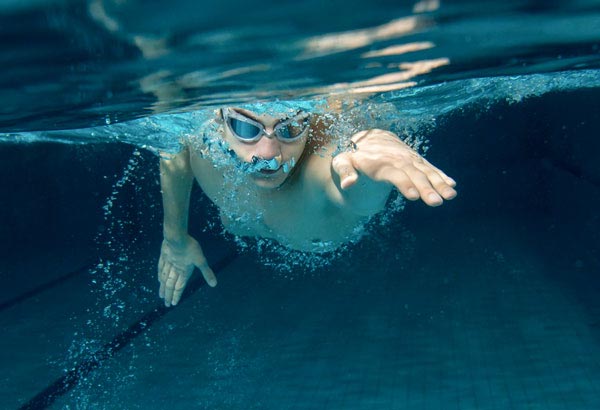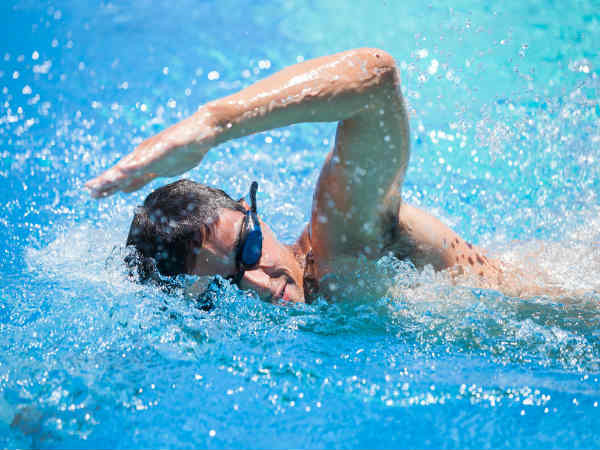- Home
- Knowledge
- Swimming skills
- Detail
Swimming technique guide for beginners to swim CONFIDENTLY and WELL!
Learning to swim confidently and well is an empowering skill that opens up opportunities for fitness, recreation, and safety. If you're a beginner, mastering the basics of swimming technique is key to building confidence and efficiency in the water. Here’s a step-by-step guide to help you get started:
1. Overcome Fear of Water
-
Start Slow: Begin in shallow water where you can stand comfortably.
-
Practice Breathing: Get used to putting your face in the water and exhaling slowly through your nose or mouth.
-
Float First: Learn to float on your back and stomach to get comfortable with buoyancy.
2. Master Basic Swimming Skills
-
Breathing Technique:
-
Inhale quickly through your mouth when your face is out of the water.
-
Exhale slowly through your nose or mouth when your face is in the water.
-
Practice rhythmic breathing by turning your head to the side (for freestyle) or lifting it slightly (for breaststroke).
-
-
Kicking:
-
Use a flutter kick for freestyle and backstroke: Keep your legs straight but relaxed, with small, quick kicks from the hips.
-
Use a frog kick for breaststroke: Bend your knees, then push your legs out and back in a circular motion.
-
-
Arm Movements:
-
For freestyle, reach forward with one arm, pull it back through the water, and alternate.
-
For breaststroke, sweep your arms out and then bring them together in front of your chest.
-
3. Learn the Basic Strokes
-
Freestyle (Front Crawl):
-
Body Position: Keep your body horizontal and face down in the water.
-
Arms: Alternate arm movements, reaching forward and pulling back.
-
Legs: Use a flutter kick.
-
Breathing: Turn your head to the side to breathe every few strokes.
-
-
Backstroke:
-
Body Position: Float on your back with your face up.
-
Arms: Alternate arm movements in a windmill motion.
-
Legs: Use a flutter kick.
-
Breathing: Breathe naturally since your face is out of the water.
-
-
Breaststroke:
-
Body Position: Keep your body horizontal and face down.
-
Arms: Sweep your arms out and bring them together in front of your chest.
-
Legs: Use a frog kick.
-
Breathing: Lift your head to breathe as your arms pull back.
-
-
Elementary Backstroke:
-
Body Position: Float on your back.
-
Arms: Move your arms in a sweeping motion out to the sides and then back to your hips.
-
Legs: Use a frog kick.
-
4. Practice Drills to Improve Technique
-
Kicking Drills: Use a kickboard to focus on your leg movements.
-
Arm Drills: Practice arm movements while standing in shallow water or using a pull buoy.
-
Breathing Drills: Practice rhythmic breathing by swimming short distances and focusing on your breath.
5. Build Confidence in Deep Water
-
Tread Water: Practice treading water by moving your arms and legs in a circular motion to stay afloat.
-
Jump In: Start by jumping into deep water and returning to the edge to build confidence.
-
Swim Short Distances: Gradually increase the distance you swim in deep water.
6. Focus on Safety
-
Never Swim Alone: Always swim with a buddy or under the supervision of a lifeguard.
-
Learn to Float: Floating can help you rest and stay safe if you get tired.
-
Know Your Limits: Don’t push yourself too hard; take breaks as needed.
7. Tips for Swimming Confidently
-
Relax: Tension makes swimming harder. Focus on staying relaxed and moving smoothly.
-
Use Gear: Flippers, goggles, and kickboards can help you practice and build confidence.
-
Set Goals: Start with small goals, like swimming one lap, and gradually increase your distance.
-
Take Lessons: Consider taking lessons from a certified instructor to learn proper technique and build confidence.
8. Common Mistakes to Avoid
-
Holding Your Breath: Exhale continuously when your face is in the water.
-
Overkicking: Keep your kicks small and controlled to avoid wasting energy.
-
Poor Body Position: Keep your body horizontal and avoid letting your hips or legs sink.
-
Lifting Your Head Too High: This can cause your hips to drop. For freestyle, turn your head to the side to breathe.
9. Practice Regularly
-
Consistency is key to improving your swimming skills. Aim to swim 2-3 times a week to build endurance and refine your technique.
10. Celebrate Progress
-
Track your improvements, whether it’s swimming a longer distance, mastering a new stroke, or feeling more confident in the water.
With patience, practice, and the right technique, you’ll soon be swimming confidently and well. Remember, everyone starts as a beginner, so take your time and enjoy the process!











